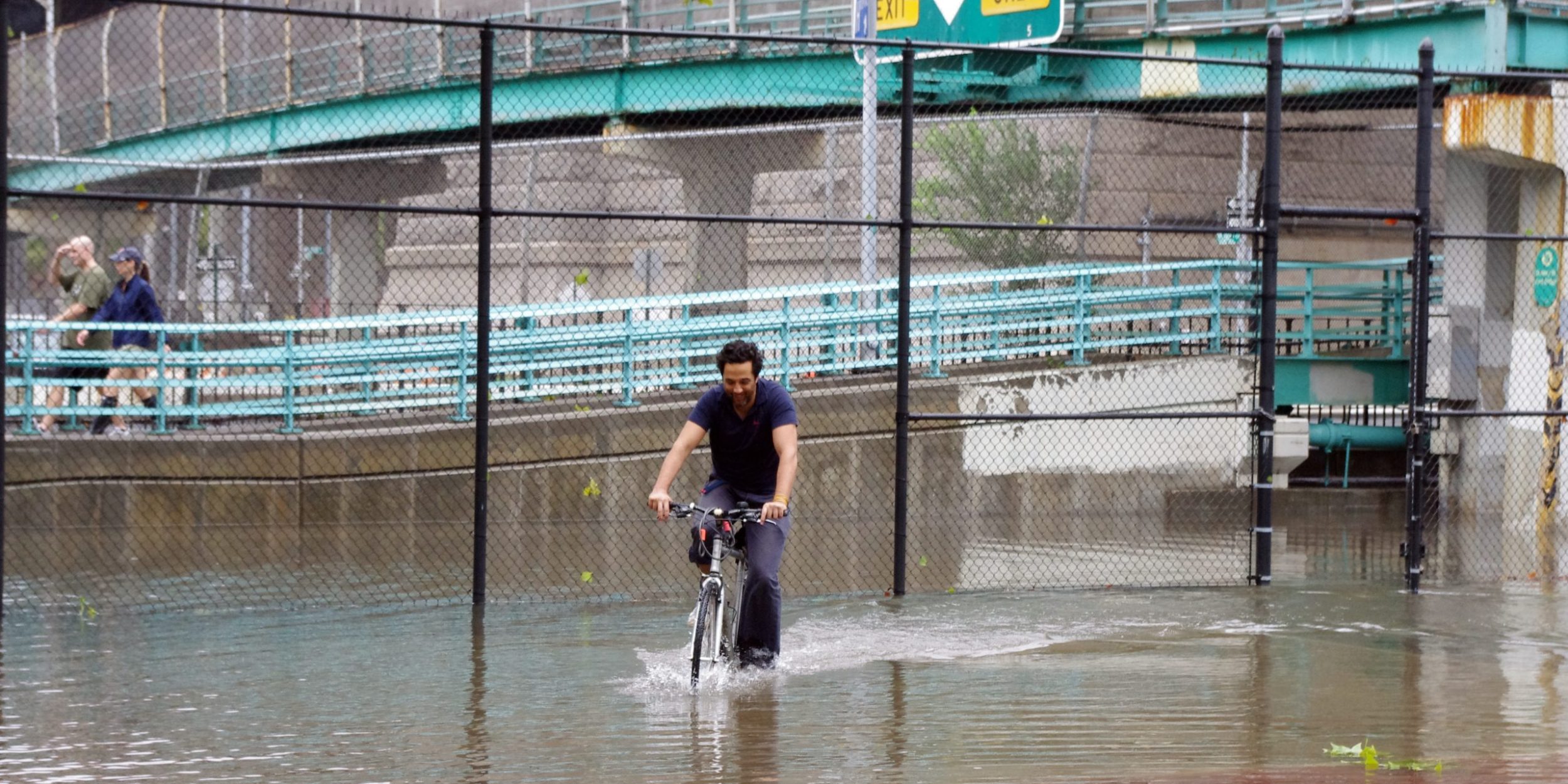For the first time, scientists have combined sea level rise projections with projections of changes in coastal storms to simulate future flooding and storm surge in New York City. A new NOAA Research-funded study warns that from 2054-2079, sea level rise could lead to a total of 165 flooding events compared to the 1979-2004 total of 7 flooding events in the Big Apple, and that major flood events may be 3 to 4 times more frequent.
Coastal storms during the winter months can cause destructive flooding along the U.S. East Coast that threatens human lives and damages property. Two factors determine the amount of flooding that occurs: the tide (including the background sea level height) and change in water height (beyond the tide) from storm winds and pressure, known as the storm surge. The Battery in NYC has experienced significant coastal flooding from coastal storm surges, such as from the December 1992 Nor’easter.
Past studies have shown that by the end of the 21st century, the number of coastal storms may decrease, the frequency of deep cyclones may increase, and the average coastal storm track may shift north. Furthermore, at The Battery, the local average sea level rise has increased at almost twice the rate of global sea level rise since 1900; this rate is expected to accelerate by the end of 2100. These findings motivate the need to include the effects of both sea level rise and coastal storms in understanding the future coastal flooding threat to NYC.
To unlock The Battery and its community’s future, a team led by Keith Roberts (Stony Brook University) evaluated how winter (November-March) storm surge may change and, combined with sea level rise, how these factors may impact coastal flooding at The Battery from 2006-2079. The authors applied the highest carbon emissions scenario (RCP8.5), given the NYC Panel on Climate Change and another study’s recent findings projecting sea level rise in the 90-95th percentile range by 2100 based on RCP8.5. To increase confidence in their results, the team analyzed output from both an ensemble of multiple models as well as an ensemble from one model, as each format has its strengths and weaknesses.
Roberts and his team did not find any significant changes in the frequency and intensity (beyond effects of
Support for this study was provided by the NOAA Research Climate Program Office’s Modeling, Analysis, Predictions, and Projections (MAPP) Program.
Access the paper: http://journals.ametsoc.org/doi/abs/10.1175/JAMC-D-16-0088.1




